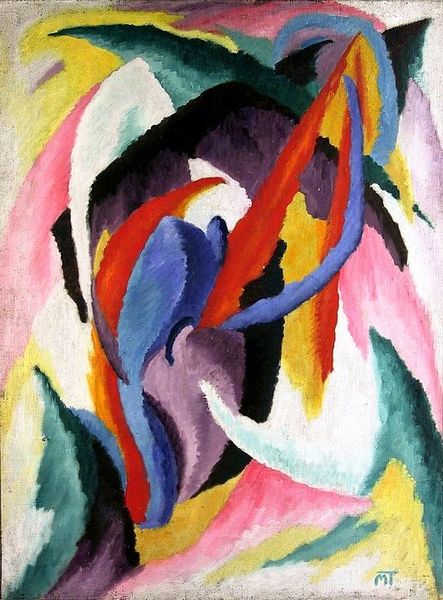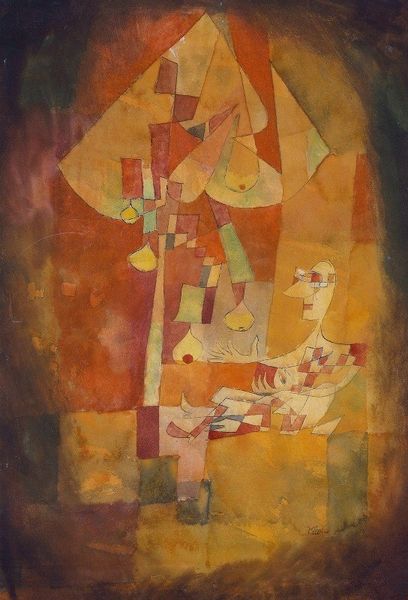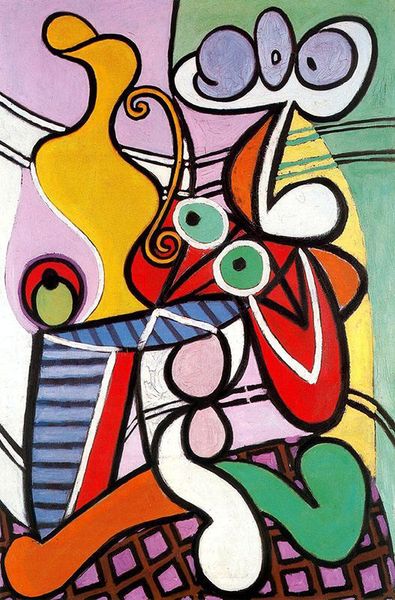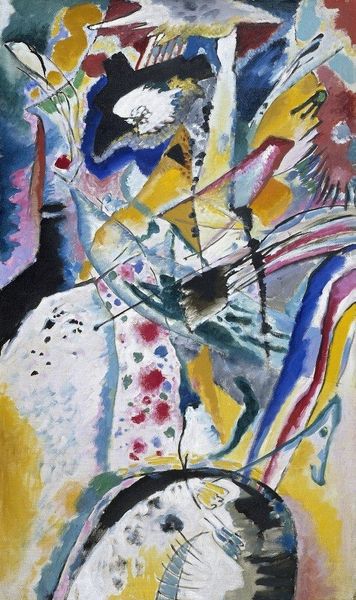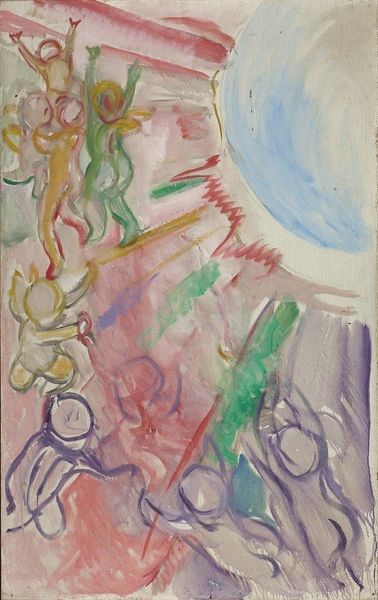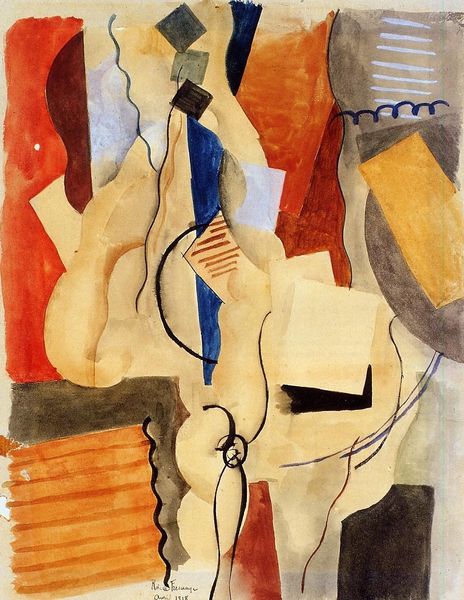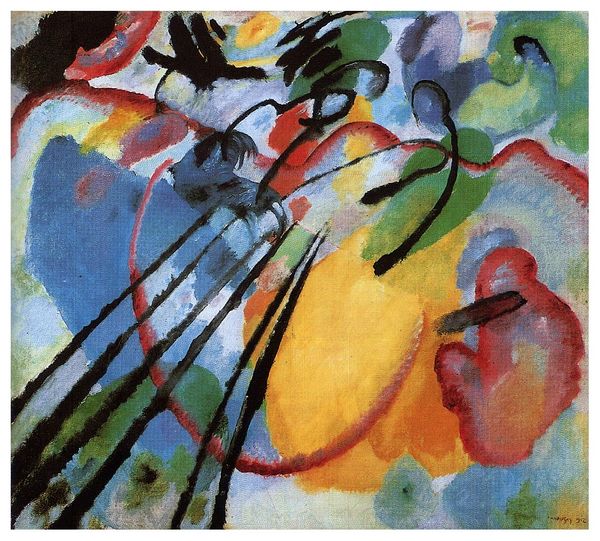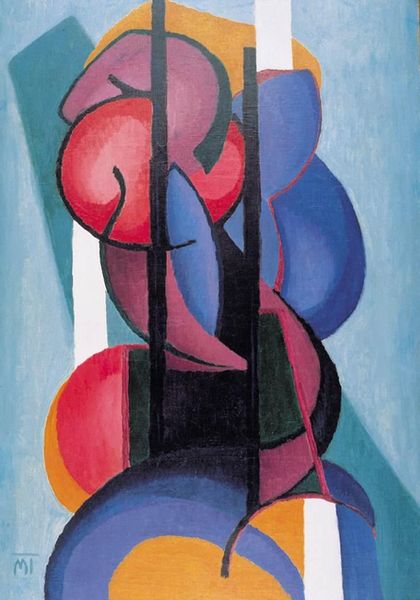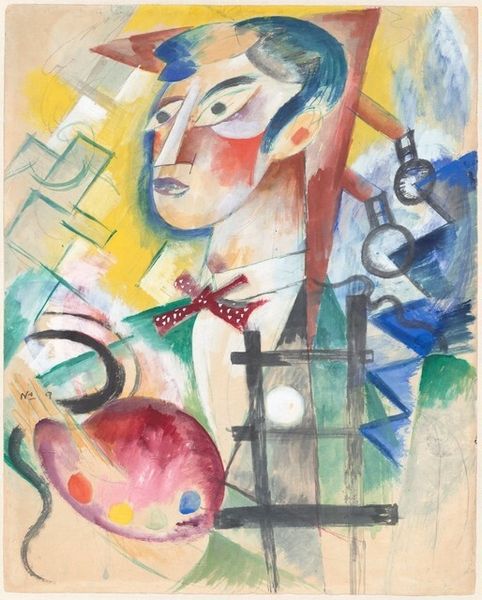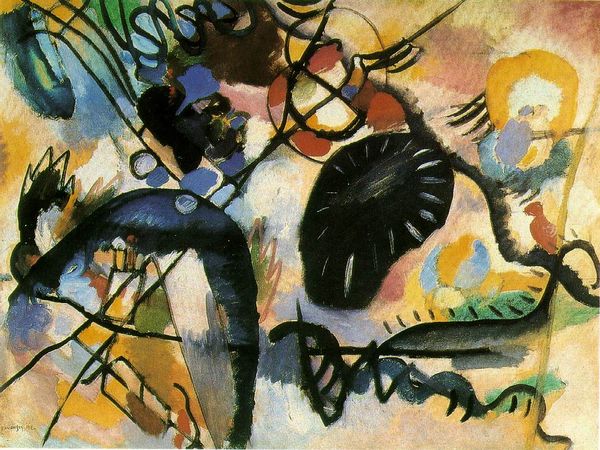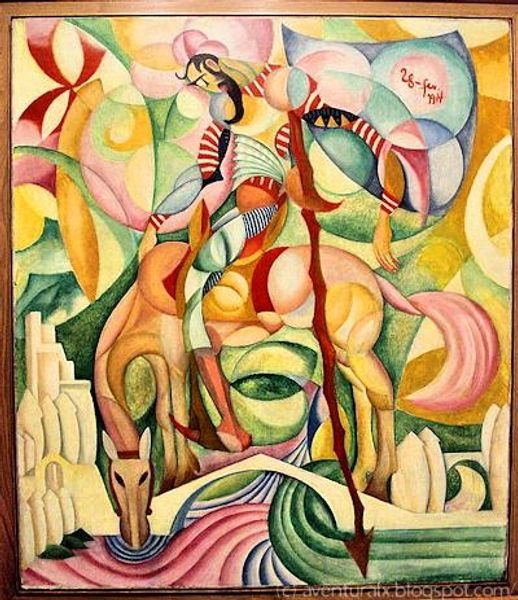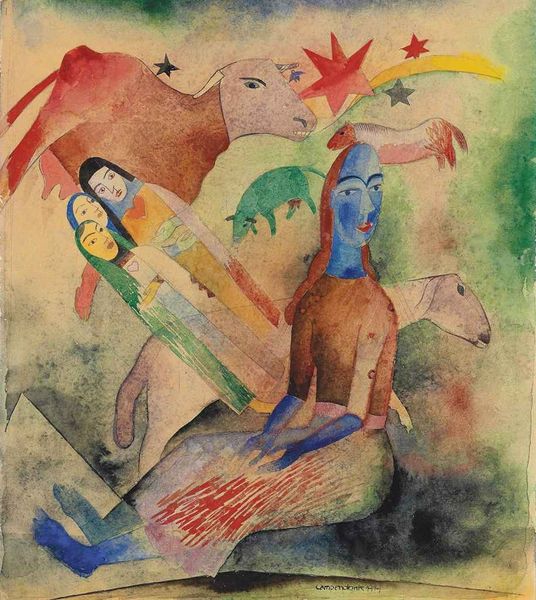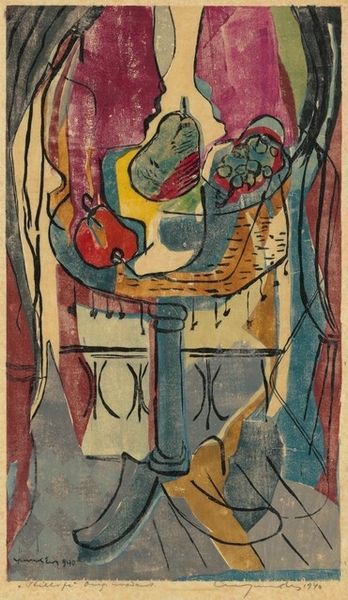
painting, watercolor
#
art-nouveau
#
painting
#
abstract
#
form
#
watercolor
#
expressionism
#
geometric-abstraction
#
abstraction
#
line
#
watercolor
Copyright: Public Domain: Artvee
Editor: Here we have Wassily Kandinsky's "Entwurf zu einem Wandbild für Edwin R. Campbell Nr. 1", created in 1914, using watercolor. It's a whirlwind of shapes and colors – I find it really chaotic and kind of unsettling. How do you interpret this work? Curator: This "design for a mural" comes from a pivotal period in Kandinsky's journey towards complete abstraction, a move inherently radical in its rejection of representational norms. Given the patron, Edwin Campbell, it’s worth exploring what a mural for him represented. Were these just decorative works for a wealthy collector, or did they represent Kandinsky's ambitions to transform lived spaces and influence social consciousness? What do these "non-objective" forms suggest about that social and political context of 1914, just before the outbreak of World War I? Editor: I hadn't considered the pre-war context. So, you’re saying that the lack of recognizable forms might actually be a statement? Curator: Exactly. Kandinsky, and other abstract artists, believed that art could communicate deeper, more universal truths by moving beyond the superficial representation of the visible world. Perhaps this chaos reflects a premonition of the upheaval to come, a society on the brink? It makes me think about the spiritual in art; what kind of spiritual or emotional state might this painting be pointing towards? Editor: I see what you mean. Looking at it that way, the bold colours don't seem so random. They're almost… urgent. Curator: Consider the interplay between the lines and the color washes. Are they harmonious or in conflict? And how might that visual tension reflect the societal tensions of the time? Think about how artists use form to express unspoken anxieties. Editor: So much to think about! It really changes how I see the painting. Curator: It goes to show how art engages in the discourses of its time, whether overtly or through subtle visual cues.
Comments
No comments
Be the first to comment and join the conversation on the ultimate creative platform.
